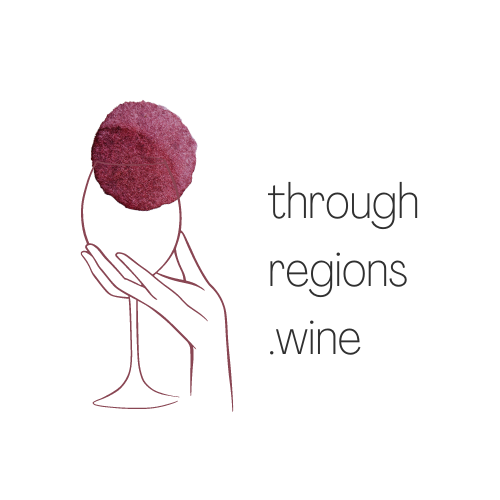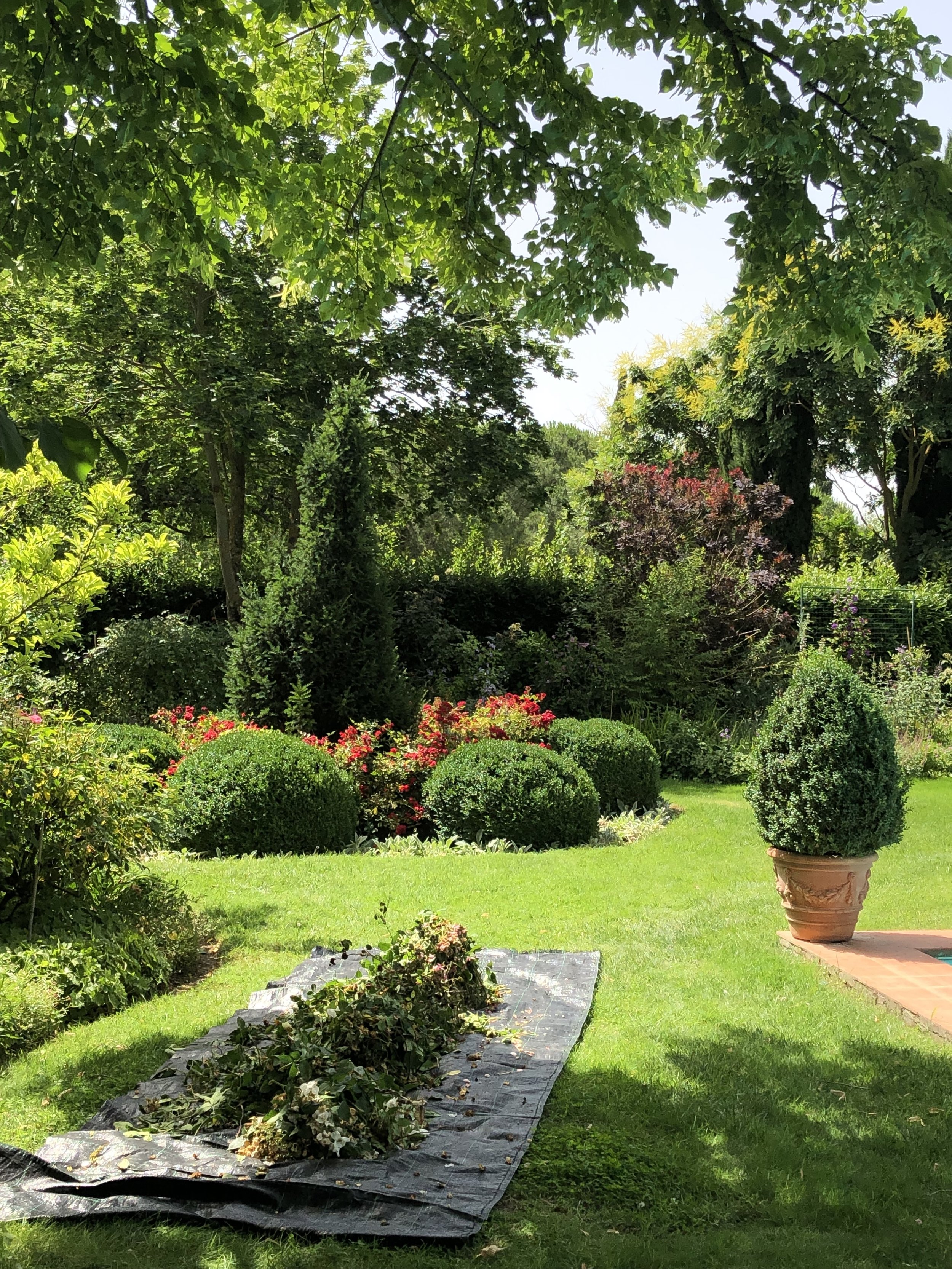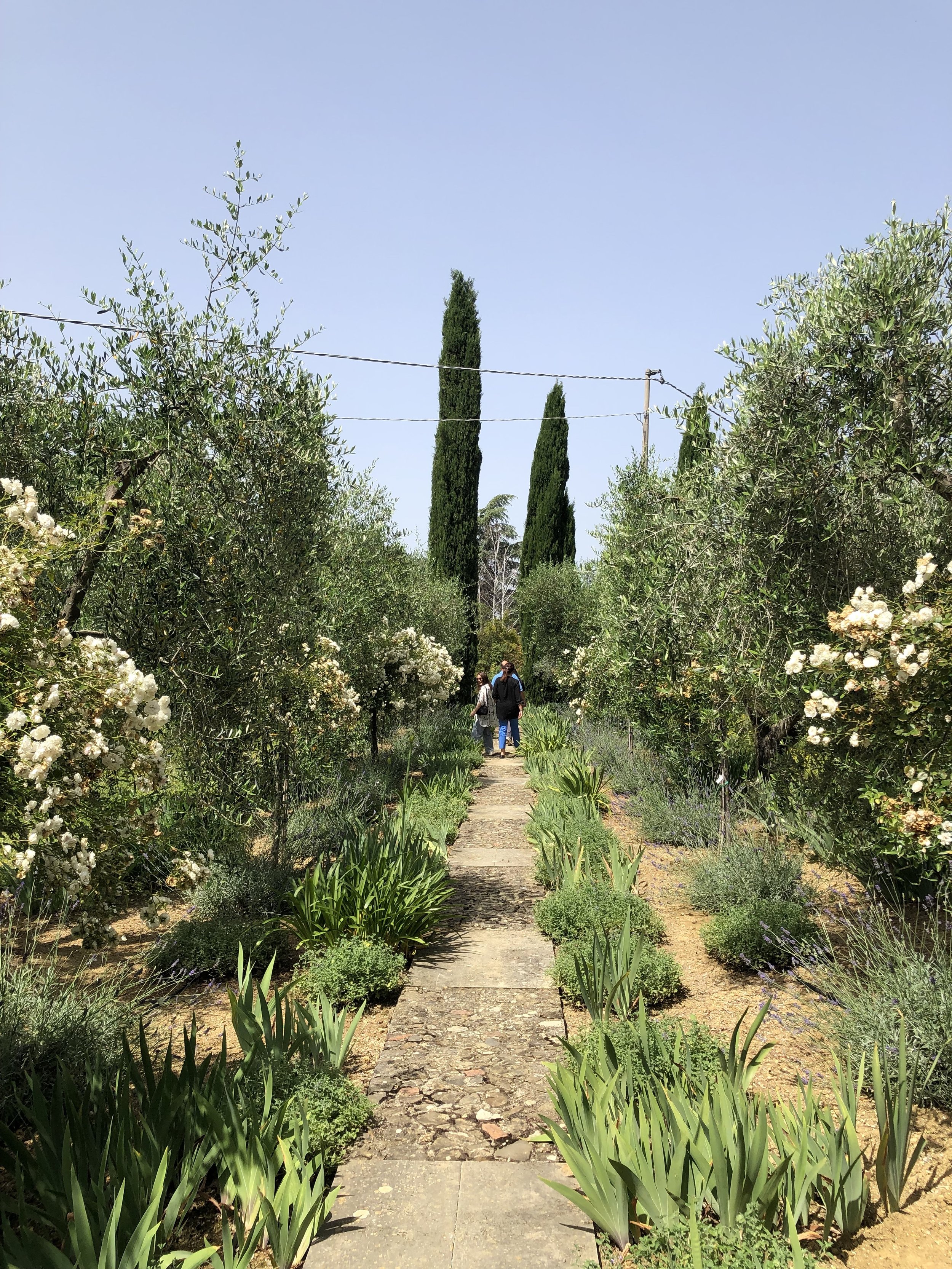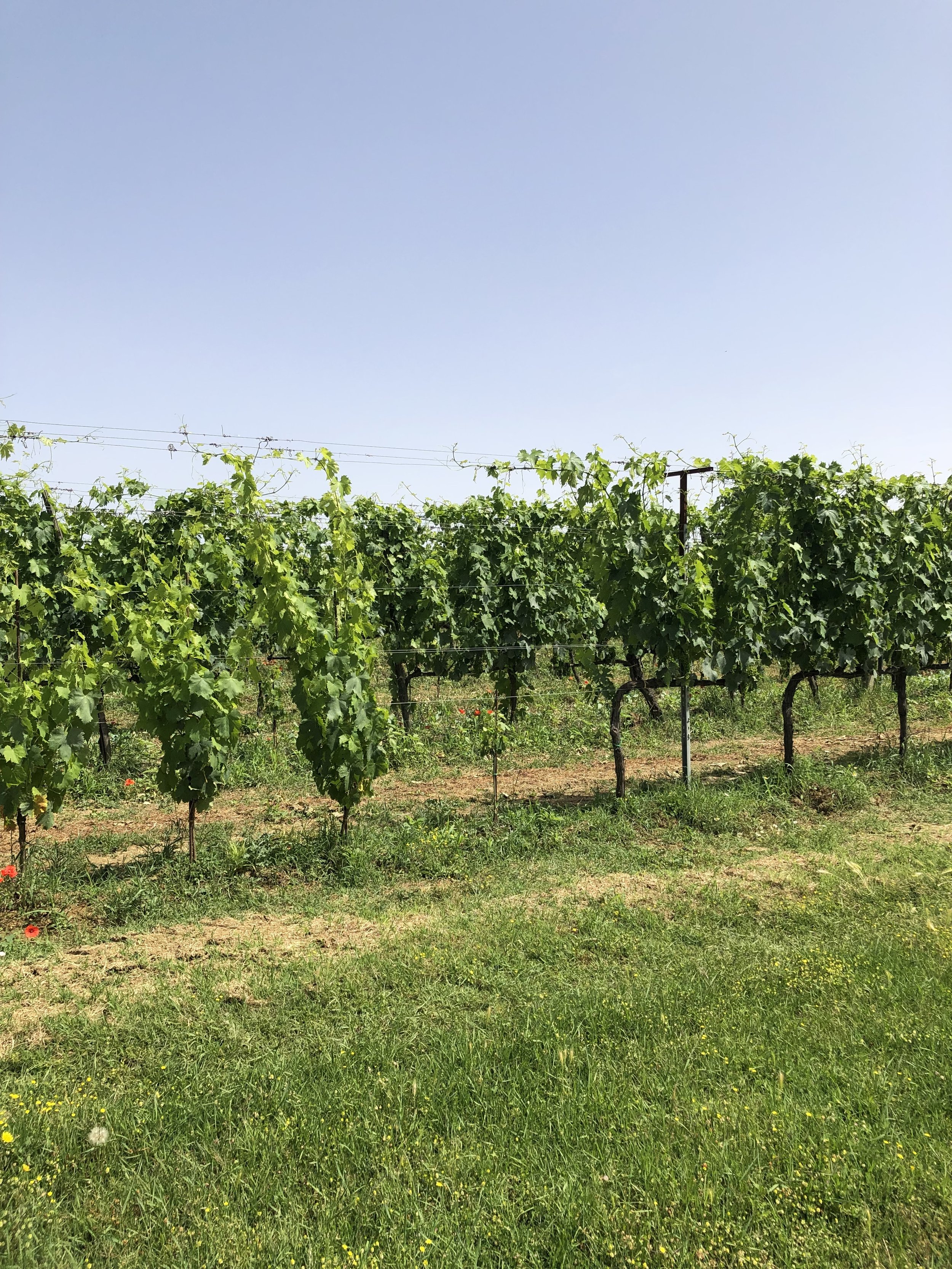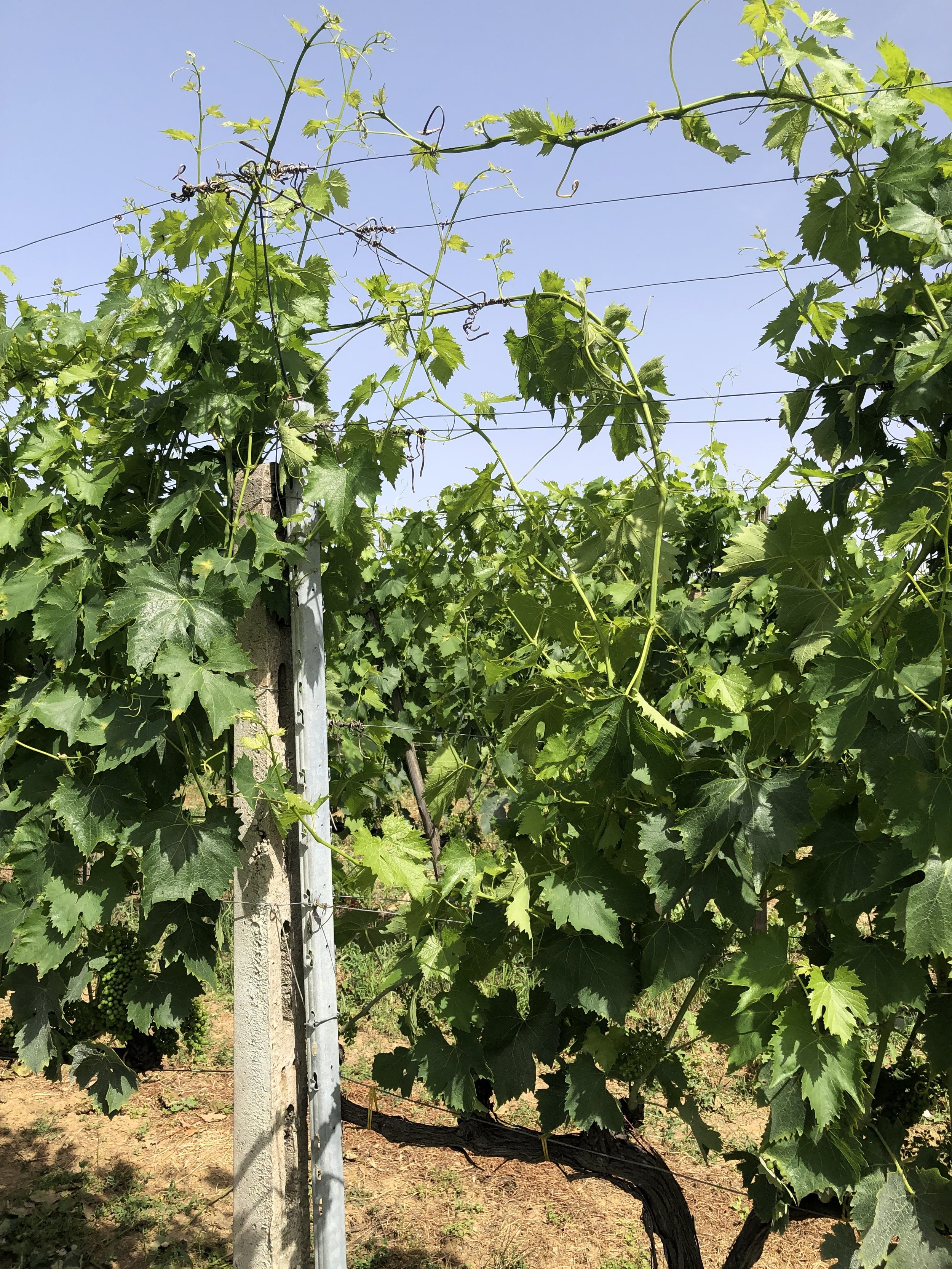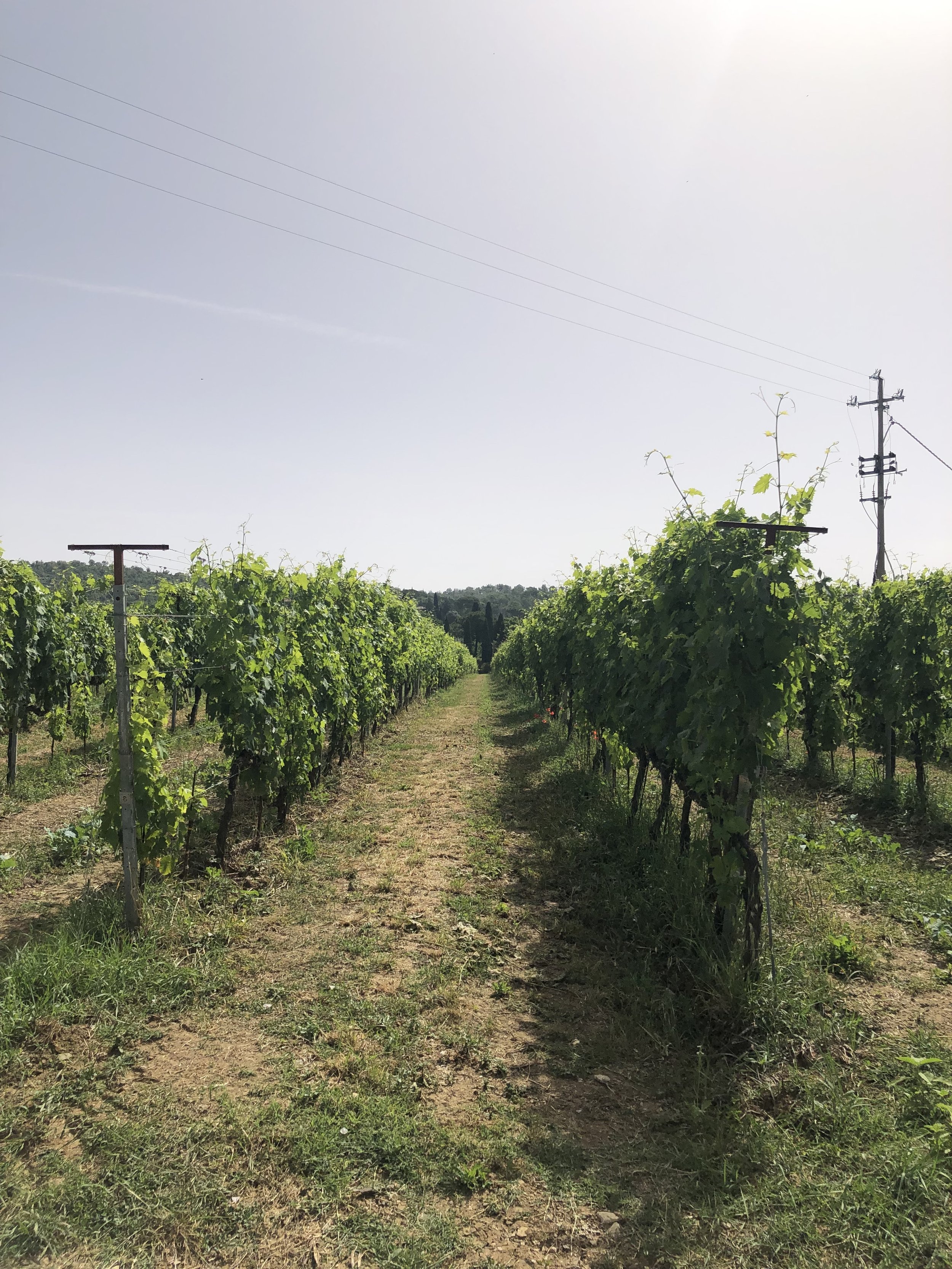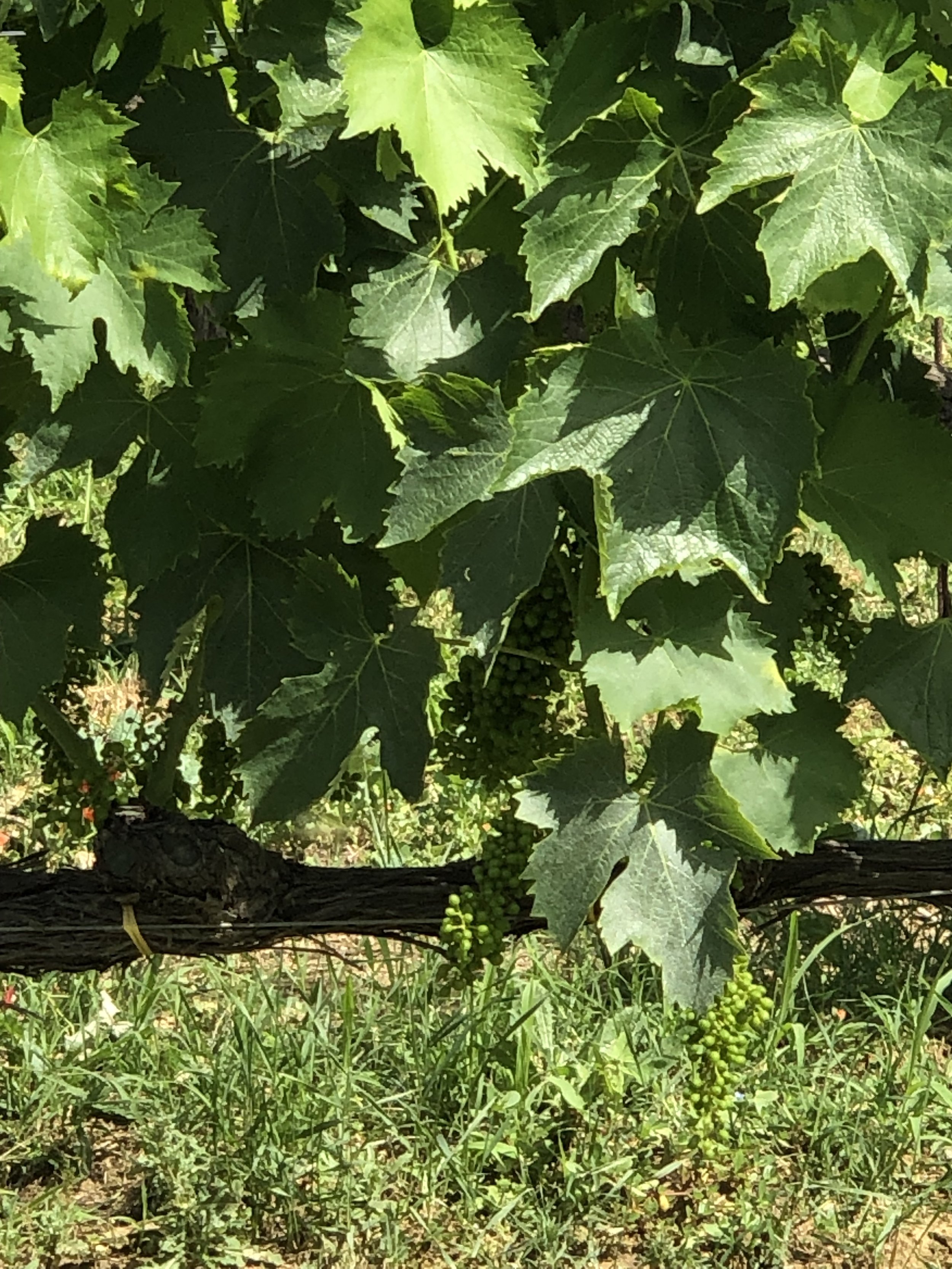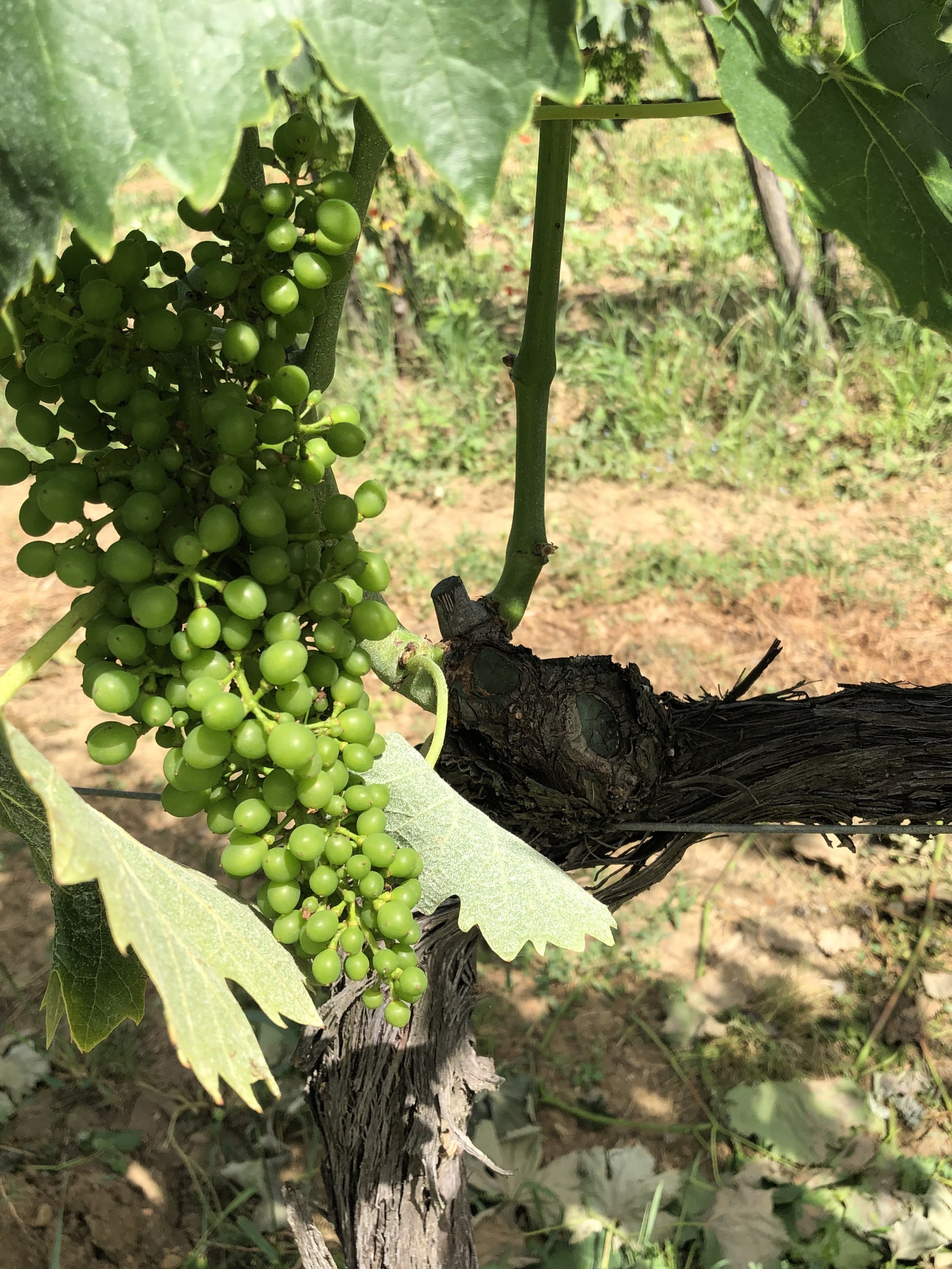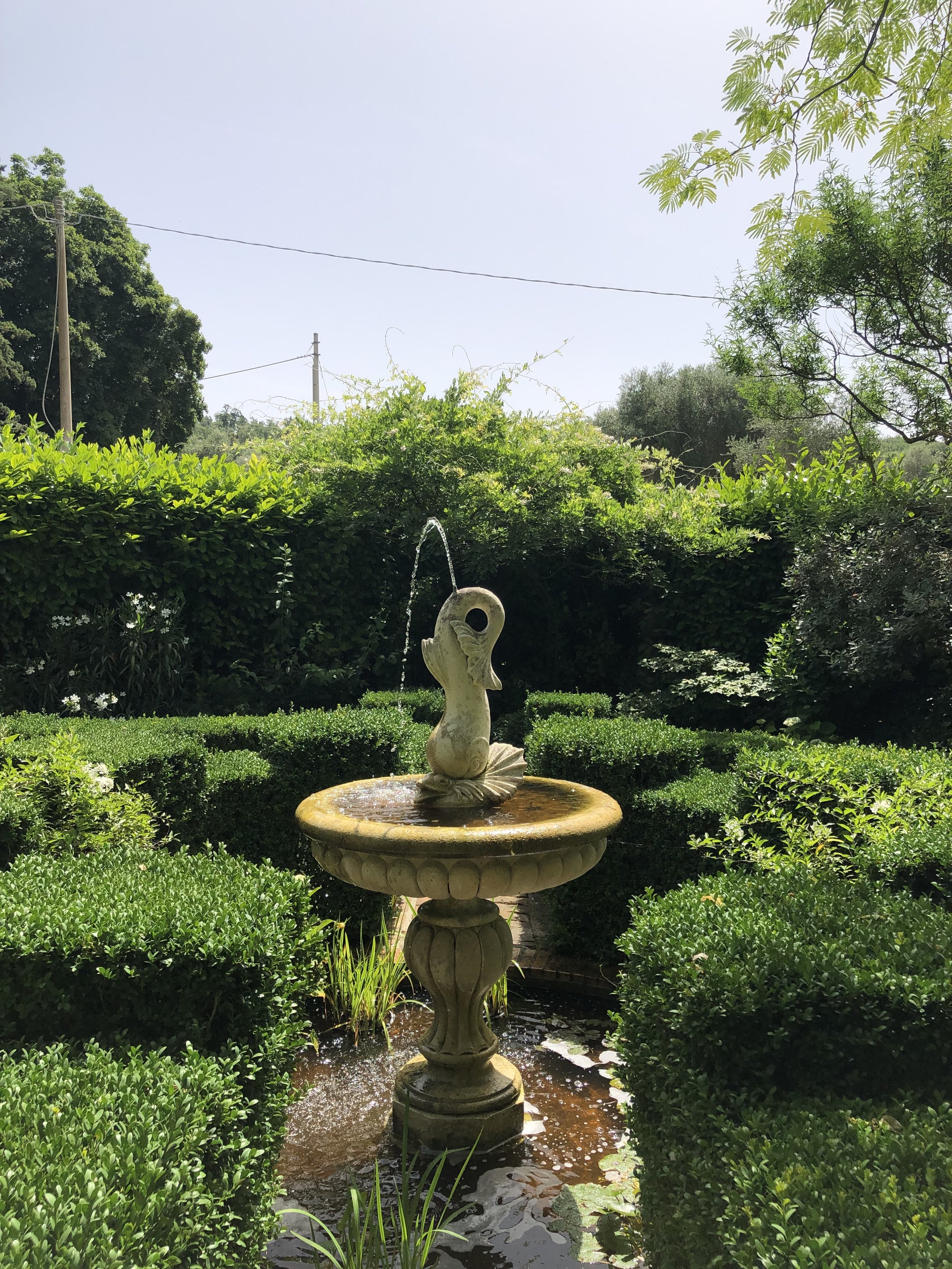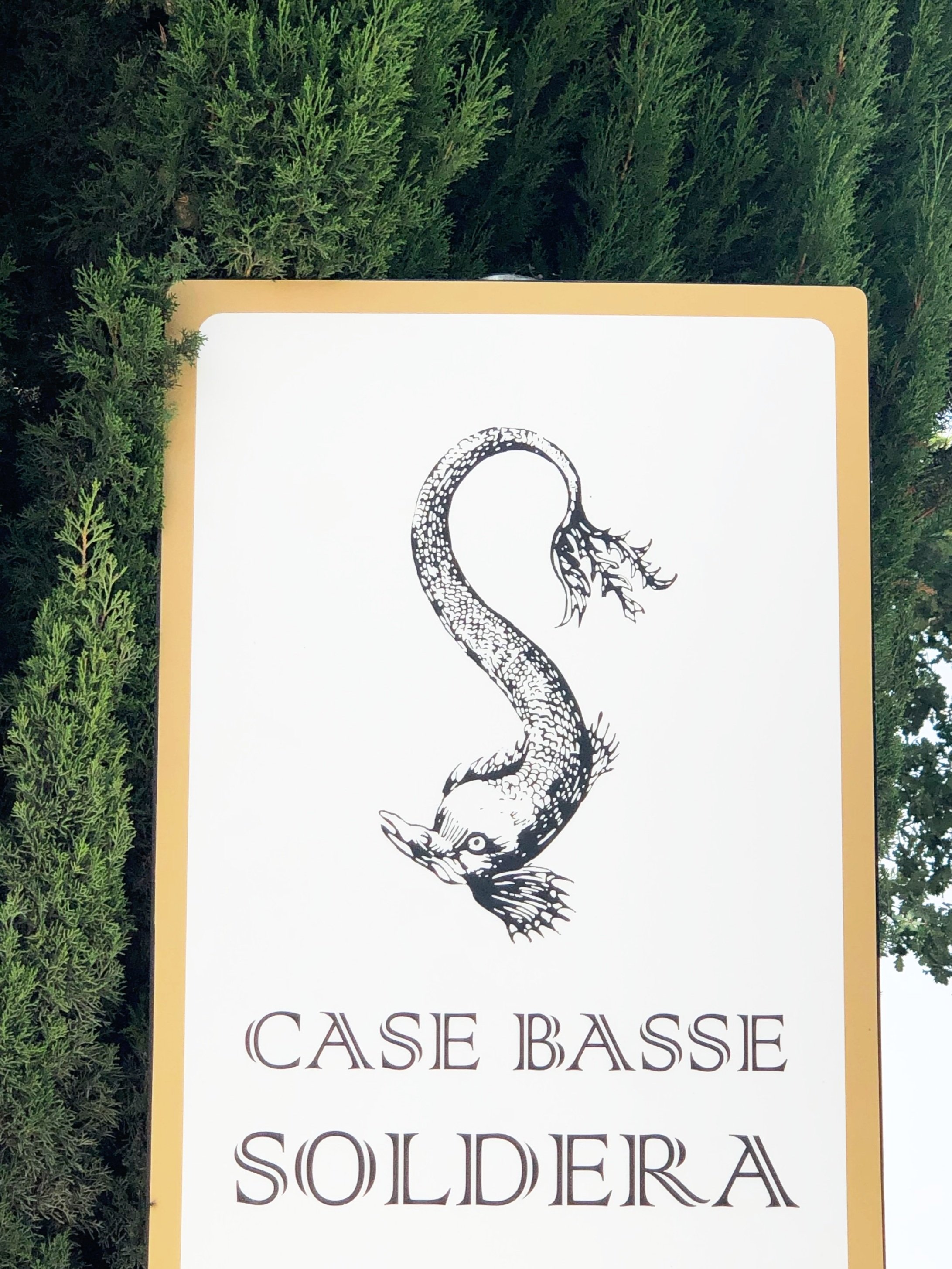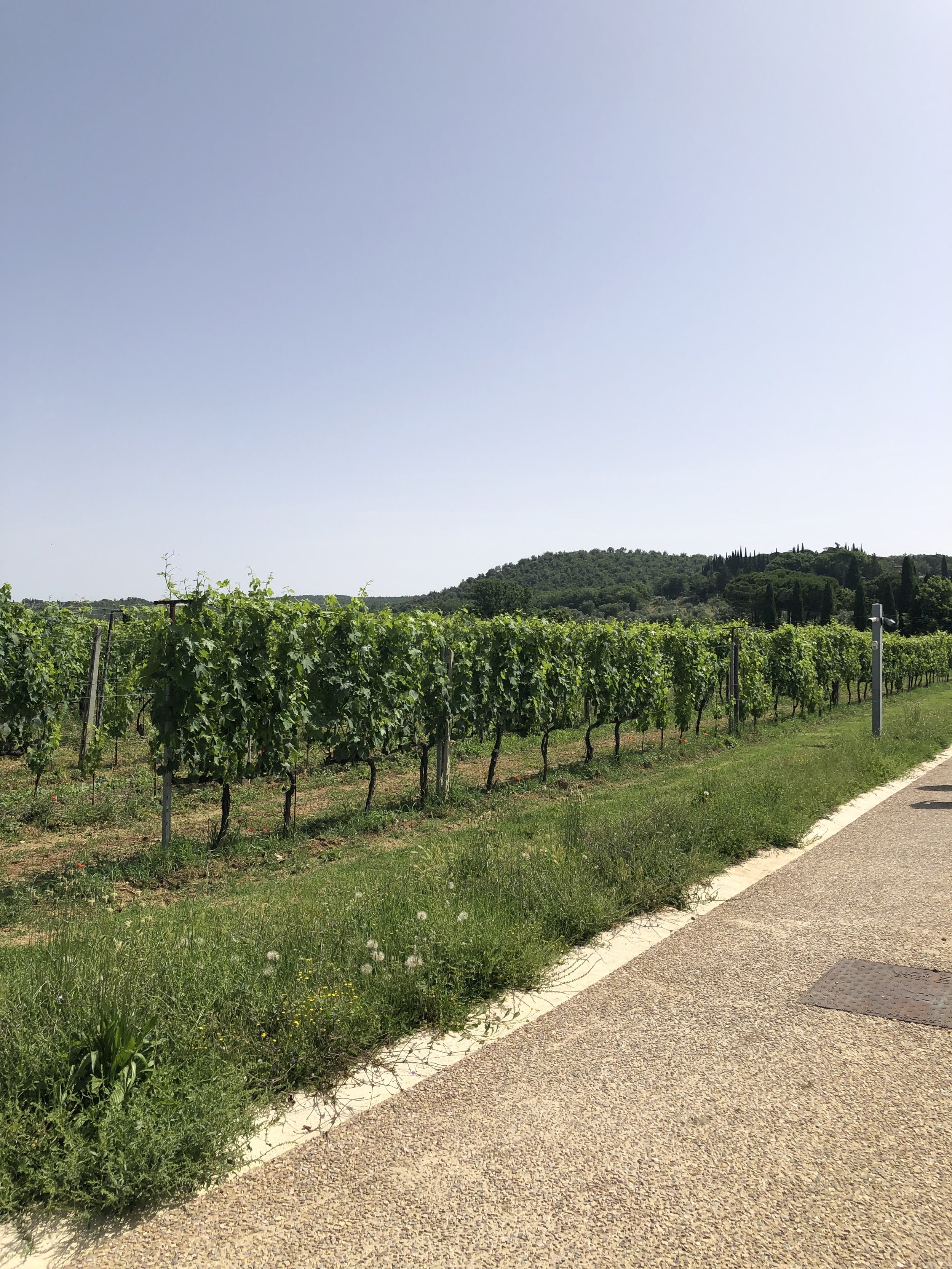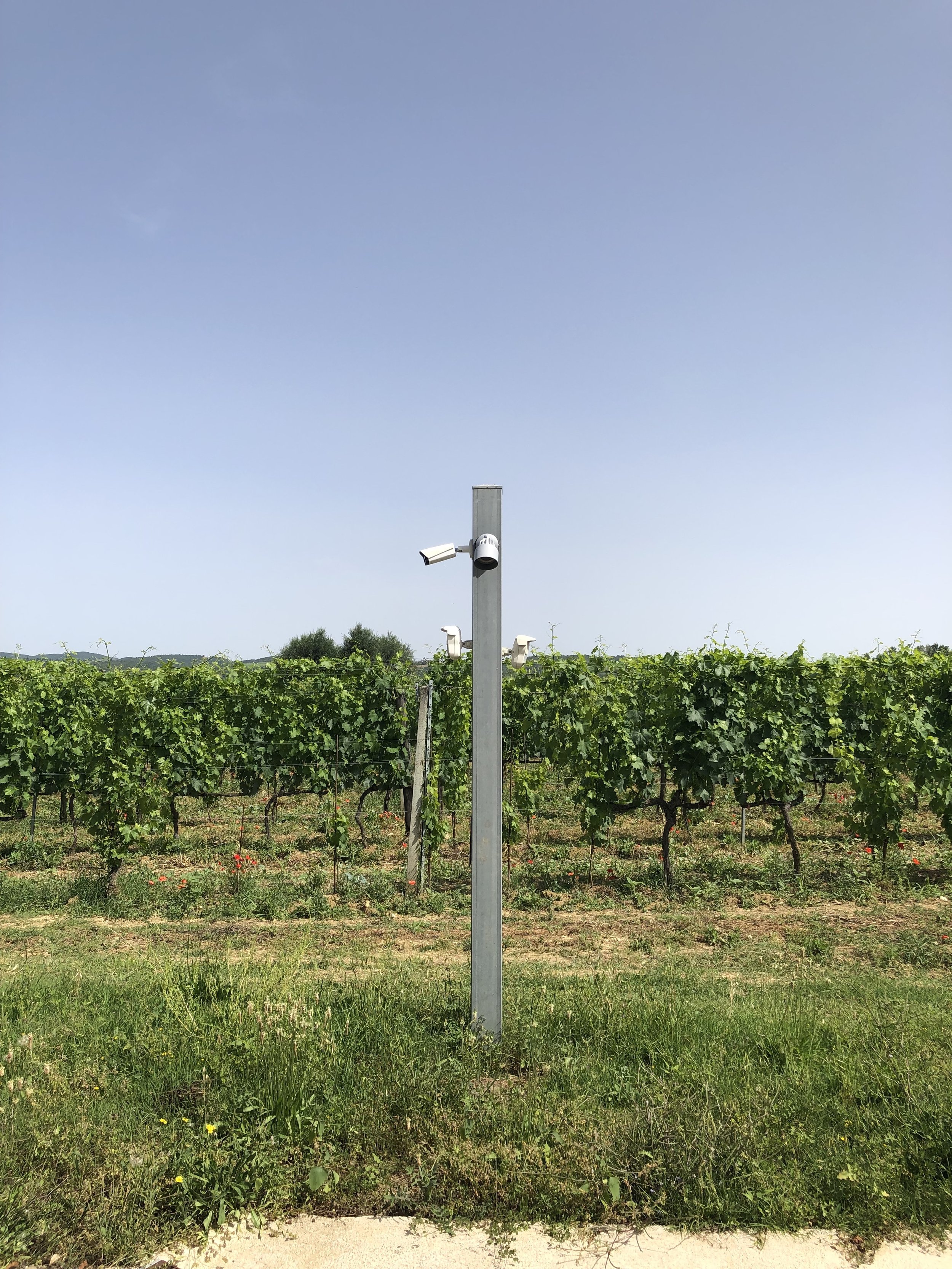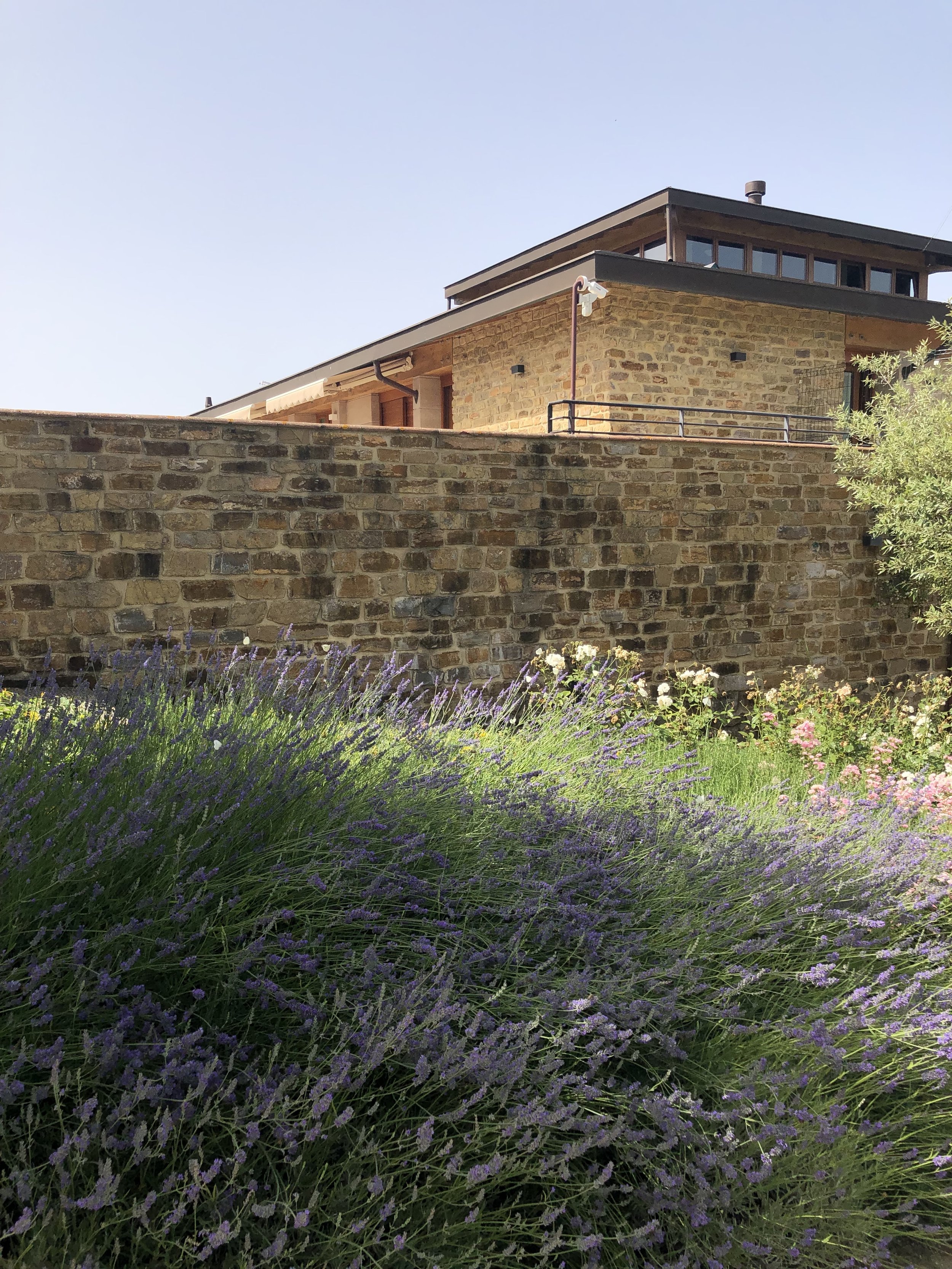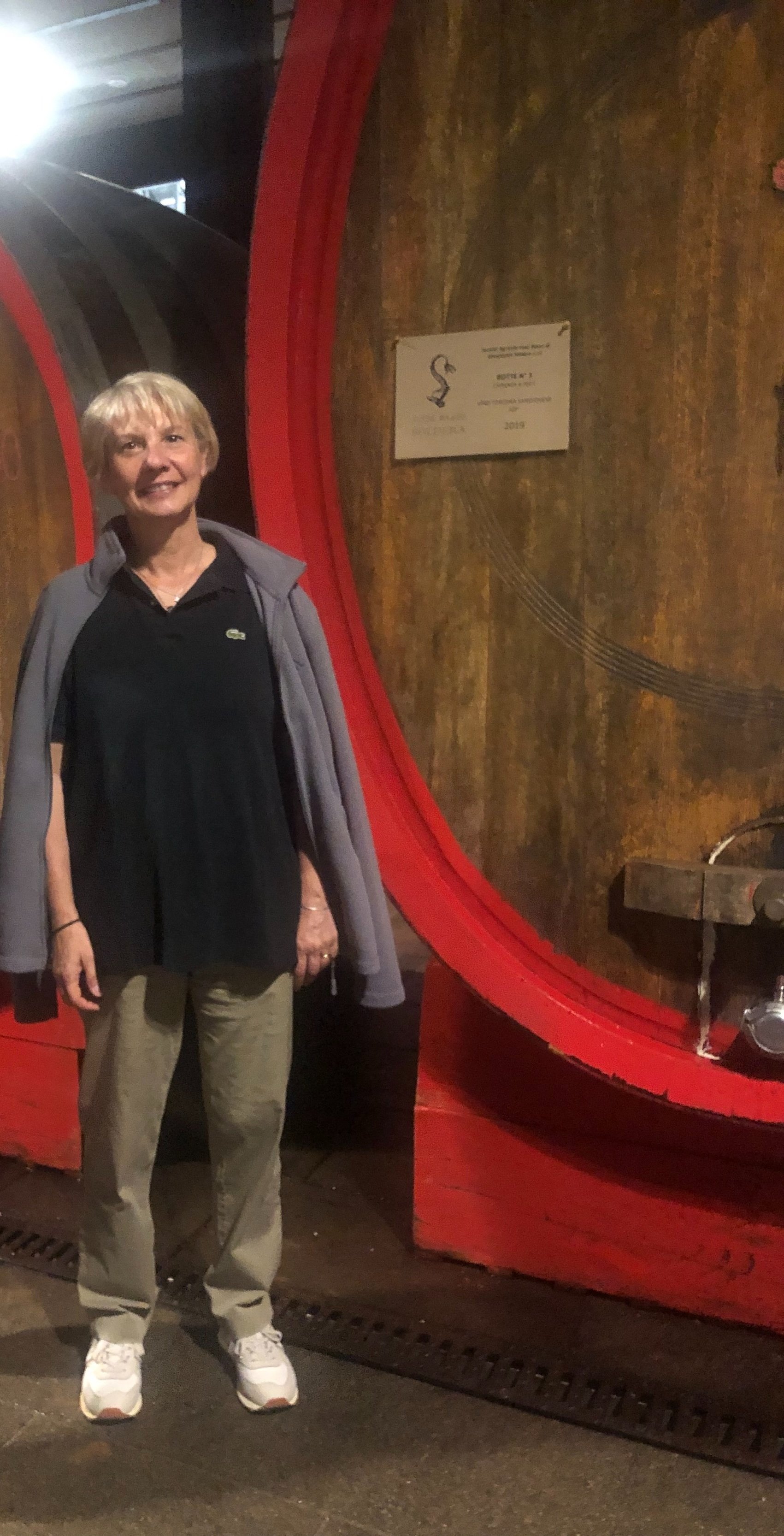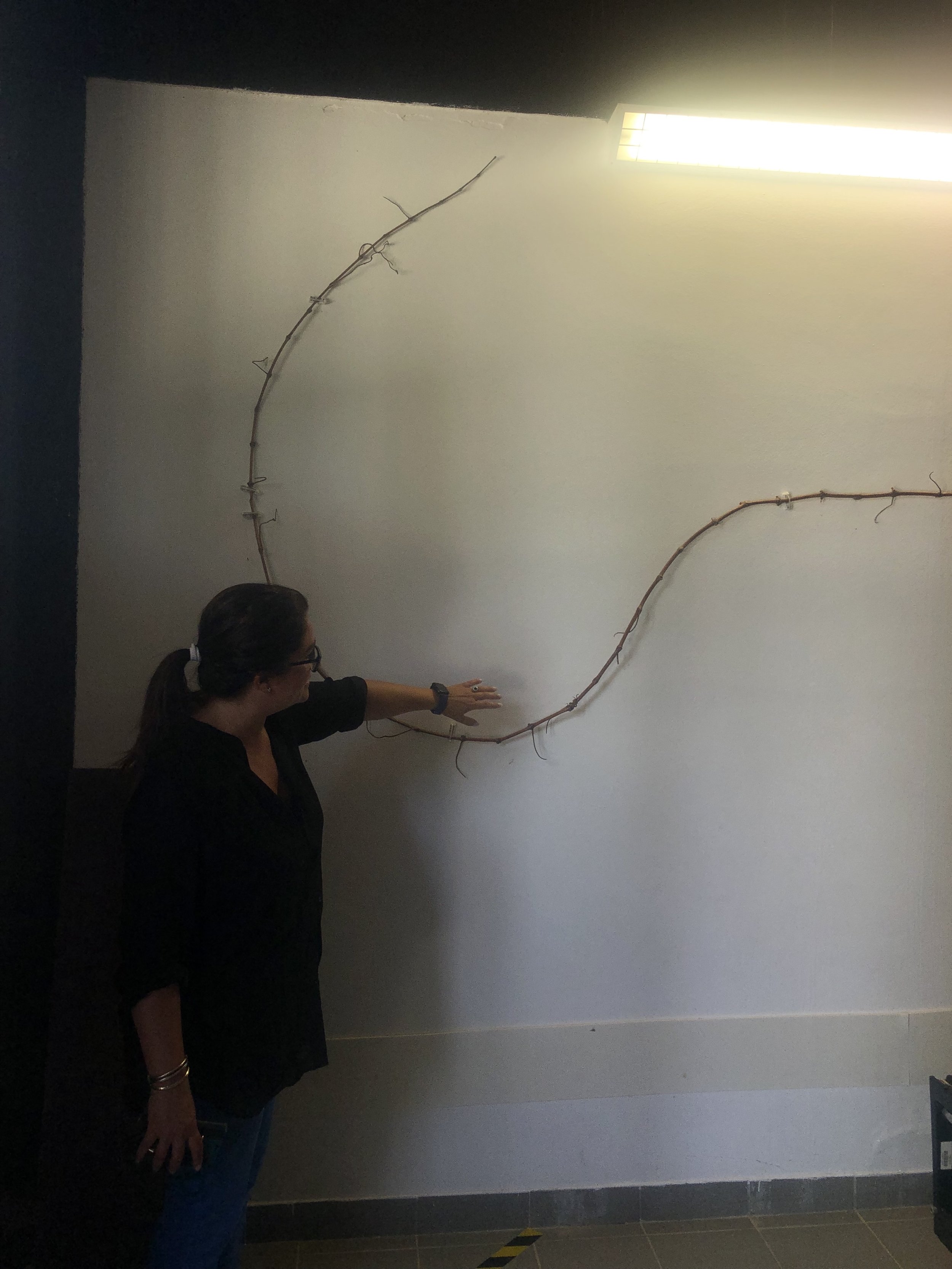Tuscany. Case Basse di Gianfranco Soldera
Sometimes an opportunity presents itself to do something special. Being invited to visit one of the most iconic estates in Italy was definitely one of them and I was thrilled when an invitation came in for late June to visit Soldera in Montalcino. Below you will find some of my impressions and a history to better understand their special wines produced solely from Sangiovese grapes.
Case Basse is a very small estate, in total 23 ha - 9.98 ha vineyards, 9 ha forest and 2 ha of botanical garden. The garden is a pivotal part of Case Basse, planted by Gianfranco’s Soldera wife – Graziella is a result of 50 years of meticulous work. Soldera’s vineyard is divided into two plots, first one 4 ha (Case Basse) and the other one with 6 ha being located on the other side of the house (Intistieti). Since there is just a single label produced by Soldera the both vineyards are blended together to create a perfect balance. In this regard the harvest date is the key. Soldera’s team is carefully monitoring the ripeness of the grapes using specifically designed sensors which you will see all over the place. As the maturation can differ slightly between Intistieti and Case Basse it is very important to plan the harvest accordingly and obtain only the perfectly mature grapes from both sites – which doesn’t mean it will happen on the same day.
The first plantings took place in 1972 when Gianfranco arrived for the first time in Montalcino. He was immediately taken over by the sheer beauty of this place. Born in Veneto, Treviso in 1937, he moved to Milan with his parents when the war broke out. There he became an insurance broker. Back during his childhood the tradition was to hold very big family dinners with all of the mom’s cooking. The tradition remained true in Milan and since Gianfranco was getting older the wine became part of this tradition as well. Wines from Veneto and Piedmont were among the favourites. The affinity for great cuisine and great wines was therefore something he was brought up with. As his success as an insurance broker was upscaling he also started to enjoy more and more special wines – among these Barolo and Burgundy. Very early on he became fond of Nebbiolo grape and thus he decided he wanted to make his own wine, preferably from it. The goal was not just to make wine, the wine had to be great. With that in mind, he ventured to the Langhe region looking for a vineyard to purchase. However, already in the 70’s. all of the decent sites to make great wines were not available.
Tuscany was on the other side of the spectrum. There was no real big tradition of making quality wines here. Vast amounts of land belonged to a very limited number of people. Moreover, the quality was not at the center of attention – the wines were more about quantity. As luck would have it, one of Gianfranco’s friends told him about a beautiful place in Tuscany he should see. Back then he had no idea what Sangiovese was – it was a totally new concept for him. When he arrived to inspect the future vineyard he immediately noticed the advantageous south-west aspect of the place. This secures an ample amount of sunlight hours during the day. He also claimed that the eastern sun is harmful to the vine leaves when they are wet.
The other story unfolds when the sun is shining on the leaves around 10 AM. By then the leaves are already dry and there is no harm on the horizon. This was the first checkpoint. Second of all – what kind of cultivation took place here beforehand. Obviously back then there were no vineyards in this place. He was looking for abandoned soil, which wasn’t in any way altered by agricultural means. The slope was, back then, covered with bushes. These were, however, very telling – it helped to identify the soil structure and the water reserve stored underneath. The first layer of soil is made of clay and directly beneath there are stones and a natural source of water. Sangiovese’s main root called fittone has the ability to dig deep into the soil with great strength thus benefiting from the high purity of it.
There are no fogs in Case Basse – thanks to the wind which is blowing from the ex-volcano Monte Amiata. The winds which descend from there are pushing the fog out of the middle slopes. In the lower part of the slopes (for example at the vineyards of Banfi) fog is a common part of the terroir. Same thing happens to the higher elevated spots. This weather pattern is, however, spared in the middle of the slope where Case Basse is located. Sangiovese’s skin is very thin, therefore a mixture of humidity and the fog could cause a high disease pressure on the grapes. This type of weather behaviour was described to Gianfranco by the farmers who used to live here. Another checkpoint crossed out was the matter of hail. This part of the region is usually hail-free. Hail is naturally very localized and some areas in Montalcino must be prepared to face it on a regular basis. A saying attributed to Gianfranco summed it up: “If you have a place with a substantial risk of hail you should better plant potatoes”. Conversely a soil fit to cultivate potatoes is not a soil fit for vine. Thus the place and the soil where we aim to plant our vineyard has to be well suited for it – in our case for Sangiovese. He wanted the specific vines that were already adapted to the area. Back then the only producers around were Argiano and Caprili. He acquired the first vines from them. They were planted on five different rootstocks – all having one attribute in common: they were vigorous.
The soil in Tuscany has a very low fertility rate – thus roots have to struggle and dig deep in search for the nutrients. Also the different rootstocks allowed to introduce another dimension of bio – diversity in the vineyards. Especially during the recent hot vintages this was pivotal to maintain the healthy status of the vines. To enhance it even further a couple years ago Gianfranco asked his team to dig trenches near the vine to implement a drainage system. Draining the water within the context may sound counter intuitive. However he believed this water could be used for the garden instead – his reasoning was following: let’s make the roots work even harder to find the water. If it is readily available the root may start to retract. Otherwise nature will run its course and the system will expand even further which in return will grant better protection for the future drought periods. He was indeed a man of science, starting from 1994 he was working on a daily basis with the University of Siena. In order to maintain the high status of the vineyards he was always willing to carry on with his research. First signs of climate change came in about 1985 when the region endured intense frost. -26 degrees Celsius in Florence – this killed even the olive trees. Gianfranco firmly believed that this was the tipping point – from there on the climate started to change. Some time later came two very difficult vintages: 2002 and 2003. 2002 was very rainy and 2003 was on the other side of the spectrum. It was a tropical vintage.
To combat changing climate in 2004 Gianfranco created an additional trellis level – bringing up the amount to three. This allows for better manipulation of the canopy and allows to create an umbrella shading effect for the grapes. The vine training method is cordon spur training. The canes are allowed to grow as long as they can. The planting density is around 3300 vines per hectare. Machines are forbidden in the vineyards – everything is laboured manually. There is no deleafing taking place. The focus is on introducing more photosynthesis for the higher quality grapes.
Because Case Basse has only 10 hectares of vines the pruning can be processed within one week. Therefore it is easier to control the bud break and to protect the vines against the frost. These become more and more often – two years in a row the frost came during the night between 7th and 8th of April. Therefore pruning the whole vineyard together as late as possible is of utmost importance. The ecosystem which caters to the health of the vines has been developed already since 1970’s – everything should be independent – including the electricity. In the 80’s they came up with an idea to build suitable nests for the birds to make them stay over the winter instead of leaving. They hired an ornithologist who looked after this project. Natural management of pests and diseases was an idea that was implemented from the very beginning. The garden is a whole different place worth mentioning. It is just mesmerizing to see the biodiversity which was introduced in this place – with butterflies all over the place and many exotic plants everywhere you look. In the middle of the garden you will see the fountain with a sculpture – Soldera’s logo. Head of the dolphin symbolizes the god of wine – Dionysus – and at the bottom there are roots which are vital to the plant. The story behind it is also interesting – when Gianfranco bought the property and started producing the wine he asked one of his friends, who used to be a painter, to prepare a label. After 10 years he delivered on his promise but he remained sceptical. Apparently he told Soldera: “you won’t like it because it is a fish”. Fish and Montalcino – how do you combine these two together? The dolphin itself was prepared from a single ceramic block – extremely old. Dionysus sends dolphins to look for Ariadne when she was stranded on an island. The traversing body of the dolphin looks like a “S” letter – which obviously stands for Soldera.
The garden consists of various peonies, roses and iris. Different parts of it are devoted to different plant species – one’s that prefer the sun are obviously exposed to it while the rest stays in the shade. The white flowers in the garden are specially selected and there is always something white blooming – even in January! Pollinators can only see white colour – therefore it was vital to keep them busy in the garden all year round. Another part of the garden is the orchard with the apple trees of Chinese origin. 34 different varieties in total that have different blooming periods to provide a food source for the insects and the birds all year round. The part of the garden where you can find a pond with the lilies was, unfortunately, under reconstruction. What a great excuse to come back!
Then we proceed to the cellars. Unfortunately the policies are very strict due to an incident that occurred in 2012 – the act of vandalism rarely to be seen in a wine community. A disgruntled ex-employee broke into the cellar after his contract was terminated and opened the taps pouring two thirds of the aging wine down the drain. Six vintages – 2007 to 2012 were lost in the process. The story did not end here however. As a result Soldera was approached by Consorzio del Brunello with an offer to receive some wine from other growers in order to keep the production stable. He refused this offer and as a result left the Consorzio altogether. Hence since 2006 the wines are no longer called Brunello but simply are labelled as IGT Toscana. Finally in an aftermath to the story there are no pictures allowed inside the cellar. Another topic is the “no spitting” policy introduced by Gianfranco. Asking for a spittoon here would be a great faux pas.
Briefly after entering the cellar we met Jurij who came to work with Gianfranco from the university of Florence, being beforehand a co-worker of professor Vincenzini who was involved with Case Basse for a very long time and remains involved today. Jurij supports the winery with the microbiological data of both the wine and the cellar, working closely with Paolo – Monica’s husband. He also took over my tour for a moment and told me more about the cellar. First you enter a large hall where the labelling and bottle packaging takes place. During the harvest this place is transformed to a grape silos. A sorting table stands in the middle used to make a hand selection of the appropriate berries. First the best bunches are selected – the ones which are damaged or not right will be filtered out. Then there is a destemming machine and lastly manual check grape by grape to ensure only the best fruit is selected. Between 6 and 8 people are working at the table to ensure it.
We then moved deeper underground with two flights of stairs into the cellar. First stop is the fermentation area. Through the holes in the ceiling the chosen grapes end up in the fermentation vats. 4 oak vats in total which are never filled to the top. In difficult vintages only one vat is being used, sometimes two – it is always a matter of the fruit quality. 2002, 2005 and 2014 – difficult vintages – only used one or two vats (approximately 7000 bottles were made). Good vintage would bump the number to approximately 15 000. If a vintage is extremely generous sometimes up to 20 000 bottles can be made. Fermentation usually takes two to five weeks. Natural yeasts and a spontaneous fermentation goes without saying. Big Slavonian oak for the fermentation. The oak was specially selected and the producer is, not a big surprise in Italy, Garbelotto. Staves for the oak were seasoned for many years according to Gianfranco’s instructions. No flavour would be imparted.
Moving on even deeper I stepped into the heart of the aging cellar. It is located around 14 metres underground. No cement was used to build it – Soldera was very clear that he wanted to build an environment for his wines that would only include natural products. Therefore each wall is literally built out of stones which are wedged into wire netting. These walls out of stone go up to 1 metre where there is a space to introduce oxygen into the cellar with the soil directly afterwards. Hence sometimes when it rains the water is also accessing the cellar. Summer temperature would be anywhere between 13 and 15 degrees Celsius. The specially designed holes introduce fresh air from above coming from the forest and the garden. Again filled with Slavonian casks (botti grande) from Garbelotto of different sizes. Jurij was already holding a couple of Soldera’s glasses in his hand ever since we started touring the cellar. We approached a big cask with a clear label “Soldera 2019” and the spigot was opened, pouring some for me to taste. As Paola told me this wine will be bottled in two weeks – hence I was one of the last people to try it before it ends up in a bottle. It only felt right to make a toast to Gianfranco.
According to Paola Gianfranco always said that the wine has to be born great in order to be great and possibly reach even higher peaks. It is for you to choose when to drink it. Once released it has been deemed worthy to be opened. This is not to say that you can’t keep it – even 50 years. The cork was specially selected and is being sourced from Sicily. The bottle is custom made with a chosen glass (it is quite heavy) and very dark – to protect the wine from the UV rays. 2019 has a wonderful translucent colour with the nose of red berries, red cherries, pine, forest. The wine is at the same time imposing and yet so extremely light on the palate with a velvety texture. The tannins are chalky and present leaving a lovely salty, umami like feeling and the finish is long. The balance is just impeccable. It is also a very special vintage for the family. Gianfranco passed away in February 2019 – therefore 2019 is the very first vintage the family looked after without his supervision.
Before the tasting was finished Monica arrived in the cellar. After gathering my impressions Monica told me, in line with her father's philosophy, that everything that you find in the glass comes directly from the grapes. This is where maximum care has to be taken. Afterwards everything should be left to nature to decide. No changes can be introduced in the cellar, therefore the fruit is so important. Balance, tannin, acidity, sugar – are all key compontens. I asked Monica about the ever looming climate change question. The answer she gave me was somewhat similar to what Anselme Selosse told me last year – both extremely talented, hardworking and nature oriented producers. First of all it is a learning curve – we learn something new with every vintage. Monica believes the first symptoms are already 20 years old. The process is ongoing but there is already some experience gained. Fine tuning, focus on certain details and openness to keep learning and adapting are vital. Anselme told me that he believes the vines will find a way to cope and adapt with the rising temperature. Monica concurred – nature is always more clever than we are – she told me. They have already noticed the adaptation of the vine even if why and how remains a mystery today. The humility to admit that we are not able to understand and master nature, keep doing our best to help the cause and trusting it is the solution Monica is following. An obvious example she has given is the early maturation of the grapes which is happening currently – “we lost one month of the process – how else can you explain this?”. Historically the harvest took place, give or take, in the first week of October. In the last 20 years the harvest was sped up by 2 or 3 weeks – landing at the middle of September. In 2022 it was the end of August! After nearly two hours my visit came to an end. It was an amazing experience and I hope to be back soon. Thank you to Paola for a great tour and to Monica for the invitation!
